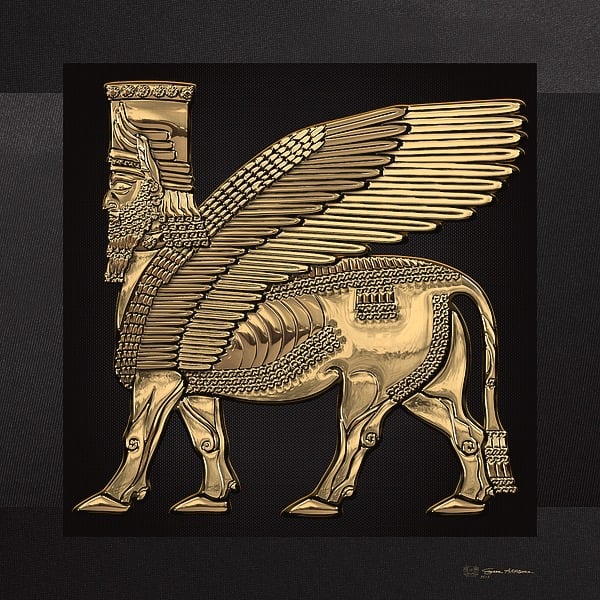The Rise and Fall of the Assyrian Empire’s Monetary System: Lessons from Their Use of Gold and Silver


The Ascendancy of the Assyrian Monetary System
The early stages of the Assyrian Empire marked a significant evolution in the establishment and growth of its monetary system. During the reign of Ashur-uballit I (1365-1330 BCE), the Assyrian Empire began to expand its influence, laying the groundwork for a robust economic framework. Gold and silver were pivotal to the Assyrian economy, serving as the primary mediums of exchange and symbols of wealth.
The strategic location of the Assyrian Empire played an essential role in its economic success. Situated at the crossroads of key trade routes, Assyria became a hub of commercial activity. These trade routes facilitated the inflow and outflow of goods, allowing the empire to accumulate substantial wealth. Merchants from various regions brought in gold and silver, which were then utilized for trade, tribute, and other economic activities.
The standardization of weights and measures was another critical aspect of the Assyrian monetary system. By establishing consistent standards, the Assyrian Empire ensured fair and reliable trade practices. This standardization not only bolstered internal commerce but also enhanced the empire's reputation among neighboring states and trading partners.
The minting of coins, while not as prevalent as in later civilizations, began to take shape during this period. The use of stamped weights and other standardized forms of currency facilitated easier transactions and contributed to economic stability. These early forms of coinage, often made from gold and silver, were instrumental in promoting trade and securing the empire's economic foundation.
Overall, the ascendancy of the Assyrian monetary system was characterized by the strategic utilization of gold and silver, the establishment of standard weights and measures, and the enhancement of trade routes. These elements collectively propelled the Assyrian Empire to economic prominence, setting a precedent for future civilizations in the region.
The Peak and Institutionalization of Gold and Silver
The Assyrian Empire reached its zenith under the reigns of formidable leaders such as Tiglath-Pileser III (745-727 BCE) and Sargon II (722-705 BCE). This period was marked by significant advancements in the institutionalization of gold and silver within the empire. These rulers not only expanded their territories but also established sophisticated financial institutions that played a crucial role in economic governance.
Temples and palaces emerged as major economic hubs during this era, facilitating the flow and management of precious metals. Gold and silver were integral to the empire's economy, serving as mediums of exchange in trade, as well as instruments for diplomatic relations and tribute. The strategic use of these metals in diplomacy and tribute helped solidify alliances and demonstrate the empire's wealth and power. Notably, the conquest of Babylon in 689 BCE by Sennacherib brought substantial wealth into the empire, further enhancing its economic stability and influence.
The economic policies and administrative reforms implemented by Tiglath-Pileser III and Sargon II were pivotal in maximizing the utility of their gold and silver reserves. These leaders introduced measures to streamline tax collection, enhance trade regulations, and ensure the efficient distribution of resources. By centralizing the control of precious metals, they were able to support military campaigns and infrastructural projects, thereby sustaining the empire's dominance.
Additionally, the period saw the standardization of weights and measures, facilitating more consistent and reliable trade practices. This standardization was crucial in fostering both internal and external trade, helping the Assyrian economy to thrive. The use of gold and silver as standardized units of value underscored their importance not only as commodities but also as fundamental components of the empire's monetary system.
In summary, the peak of the Assyrian Empire was characterized by the efficient institutionalization of gold and silver, which played a central role in its economic and diplomatic strategies. The reforms and policies introduced during this period laid the groundwork for the empire's prosperity and influence, making it a formidable power in the ancient world.
Decline and Lessons for Modern Economies
The decline of the Assyrian monetary system, spanning from the late 7th century BCE until the fall of Nineveh in 612 BCE, was marked by a combination of internal and external pressures. The overextension of military campaigns significantly strained the empire’s resources, as vast amounts of gold and silver were allocated to sustain continuous warfare. The reign of Ashurbanipal (668-627 BCE), despite his notable contributions to the empire, exemplified this overextension. His campaigns, although initially successful, eventually spread the empire’s resources thin, leading to financial instability.
Heavy taxation imposed on subject peoples further exacerbated internal discontent. The empire's reliance on high taxes to fund its military endeavors and lavish architectural projects placed an unsustainable burden on its populace. This led to widespread revolts and resistance, undermining the central authority and weakening the Assyrian grip on its territories. As the empire expanded, the administrative complexity increased, leading to inefficiencies and corruption within the system.
The depletion of gold and silver reserves was another critical factor in the empire’s decline. Mismanagement of these precious resources, coupled with the inability to secure new sources, led to a shortage of currency to support both the economy and military. The diminishing reserves reflected the unsustainable nature of the Assyrian economic practices, which relied heavily on conquest and tribute rather than diversification of the economy.
Modern economies can glean valuable lessons from the Assyrian experience. Effective resource management is paramount; overreliance on finite resources like gold and silver can lead to economic vulnerability. Diversification of economic activities ensures stability and resilience against external shocks. Additionally, maintaining a balance between taxation and public welfare is crucial to prevent internal strife and ensure long-term stability. Sustainable financial practices, including prudent fiscal policies and efficient administration, are essential to avoid the pitfalls that led to the Assyrian Empire’s downfall.
